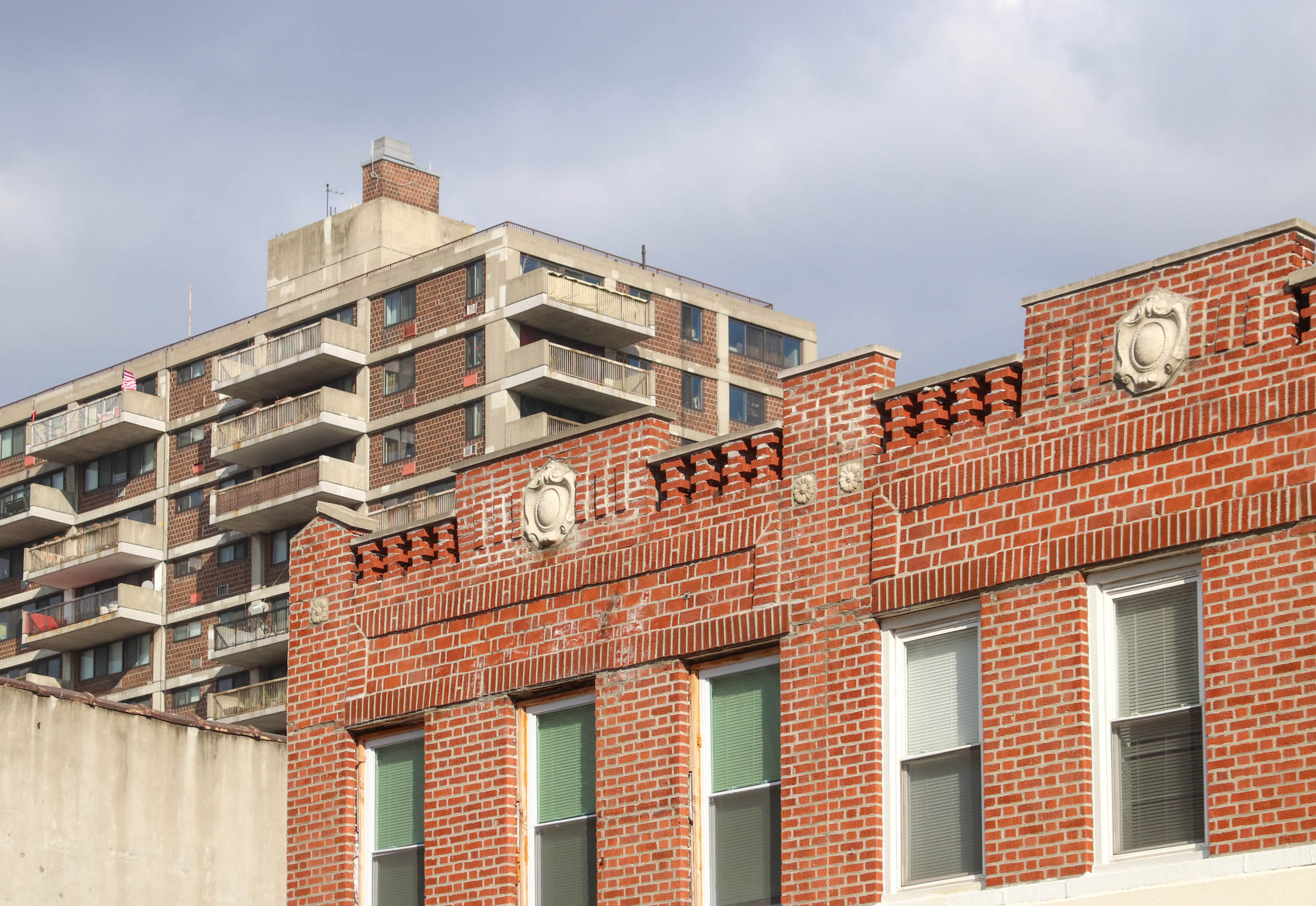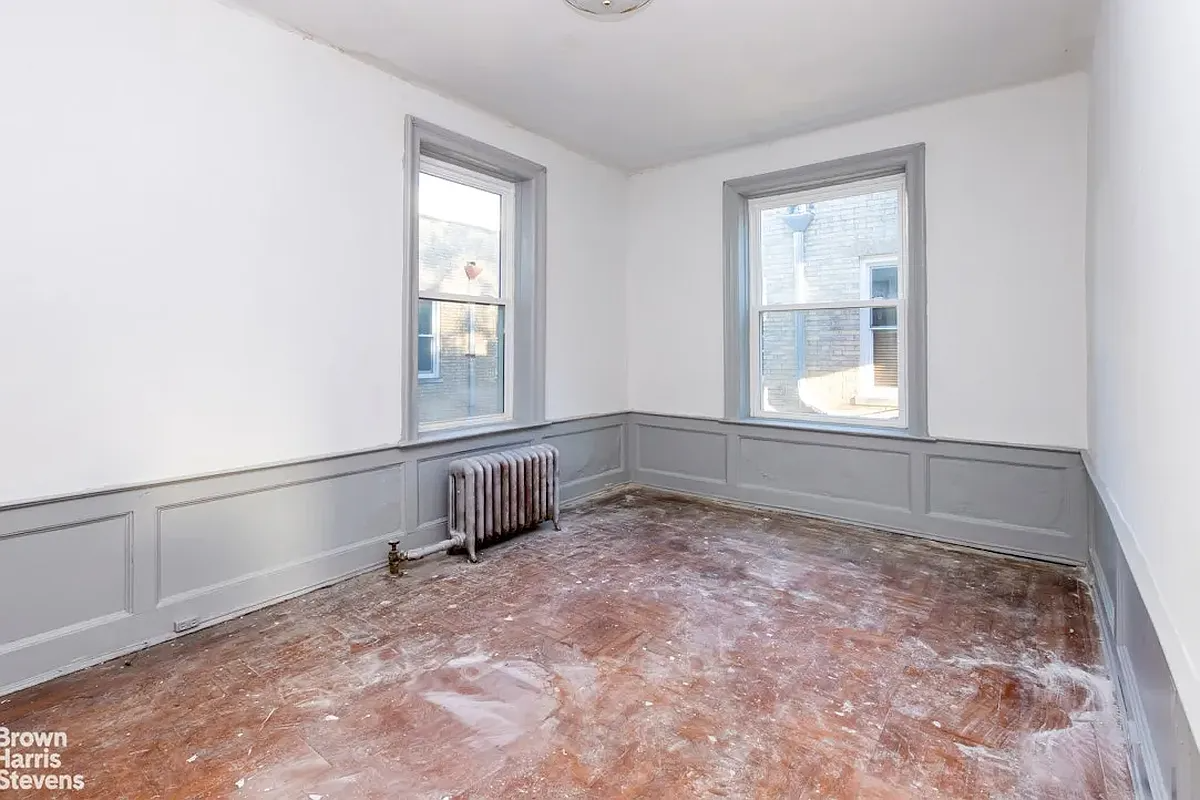New Kosciuszko Bridge Won't Come Cheap
In October, a Department of Transportation panel narrowed the list of potential designs for the new Kosciuszko Bridge down to three finalists, including what The Brooklyn Paper calls the front runner, above. In addition to a new look, the bridge of the future will have nine lanes instead of six (yay!) as well as a…


In October, a Department of Transportation panel narrowed the list of potential designs for the new Kosciuszko Bridge down to three finalists, including what The Brooklyn Paper calls the front runner, above. In addition to a new look, the bridge of the future will have nine lanes instead of six (yay!) as well as a bike and pedestrian lane; the whole thing will be set at less of an incline than the current structure because tall boats no longer go underneath. All this good stuff won’t come cheap though: We’re looking at a $1 billion price tag. Sounds like a lot of dough to us, but apparently that’s what it takes to get bridge builders out of bed these days. For a bridge that is a mile long in New York City, $1 billion is the going rate, said DOT spokesman Adam Levine. The Feds will pay 80% of the freight, leaving the state with the rest. But the state is now talking about slashing its transportation spending, so it remains to be seen of the bridge, over which 160,000 vehicles pass every day, makes the cut.
The Billion-Dollar Bridge! [Brooklyn Paper]





It’s politically difficult, but the following is what I see as the ideal transportation infrastructure solution:
Make make highways and parkways VERY expensive to travel on, but make sure they are extremely well maintained and worth the cost. This will remove the folks that are “borderline” users (i.e., folks that don’t *need* to use them, but do.) Then traffic will flow nicely for three groups (1) trucks and commercial vehicles; (2) public transportation — buses and taxis; and (3) “luxury” users — both everyday rich folks and folks like me that want to leave the city once in a while and do it in under 2 hours. All three of those groups are VERY happy even though they are paying more — because the net costs/savings work out. Huge savings in time vs. more $$.
Yes, this is the notion of congestion pricing. This got crushed by the “borderline” users of the roads… folks commuting to Manhattan from Queens and Brooklyn. Commercial users of the roads (e.g. the Teamsters) support such schemes. Take a look at London.
The road maintenance and design issues only require a small portion of the extra revenue… the excess is pumped into public transportation options. And because of the lower volumes of cars, other transportation options emerge… such as dedicating and restricting lanes to buses, trams and taxis.
tybur6 – I dont have the data either but since the traffic is largely a function of trucks slowing down (Bridge traffic builds up well before there is even the slightest traffic on the rest of the BQE) the incline reduction and more lanes may be a net benefit ( I mean you could put speed bumps every 100yrds too cause that would make driving really incovenient and would reduce car trips but you have to balance the utility of surface transportation like autos vs the increased traffic/pollution.) No doubt opening the road up will invite more trips, the question is over a 365day 24/7 analysis will reducing this bottleneck ease more traffic then it invites – I dont know either- but I am guessing b/c of the nature of that spot=yes
Yeah Arthur Ravenel Bridge is so comparable. AR Bridge was built in a middle of a great cosmopolitan area, densely populated, above a protected cemetery and the living standards, thus labor cost, is very high.
fsrq — Not that I have data, but I would think reducing “time on the road” would far outweigh the “convenience” argument when it comes to pollution etc.
The current bridge bottleneck probably adds 15 mins to travel time (though I’ve been stuck around there for 1/2 hr easy)… basically cars idling in place, not getting to their destination. Every car (except maybe a Prius) gets ZERO miles/gallon when they are stopped… just belching out CO2 etc with no purpose.
maroon who?
Epiphany – because 9 lanes will free up the traffic sitting waiting to get on the bridge becuase its too narrow. That currently leads to traffic sitting in jams and spewing out pollutants from the brdige all the way back down to the union exit instead of just buzzing by, which means lower pollution emissions in the area.
Epiphany –
NYC – especially LI is TOATALLY dependent on truck traffic – (look up cross harbor rail tunnel, PA, and Junipar Park Civic association – to learn how NIMBISM is what is helping to keep things this way)
Trucks slow down on inclines (they are heavy) and despite the fact that this bridge will have less of an incline than the current, inclines/bridges become bottlenecks of traffic due to trucks (and even cars) slowing down as they enter a bridge….if you have more lanes at the bridge point, it can help open up this bottleneck – thereby reducing traffic, pollution and all the ills you discuss,
Of course there is an argument that by easing the bottleneck, you will reduce overall traffic, thereby making automobile traffic more convenient, and thereby resulting in more cars and more traffic – but it is a tradeoff and as long as NYC is dependent on Trucks for freight, there isnt much you can do.
The tool from Maroon 5 works for the DOT?
Man, I was living in Europe when the French got all pissy about some sort of EU rule about truck drivers and their work week… so they blocked the highways and didn’t let trucks through.
Anyway, it turns out that was the week I decided to rent a car when a friend was visiting… drive all over for a week. High gas prices to start PLUS a gas shortage (with the threat of empty gas pumps). Talk about painful to the ol’ wallet! Yowzerz. This was when the Euro was at $0.75 (unlike the $1.50 it is today) and gas was running around $7.50 a gallon ($2 per liter) I think it was about $2 a gallon here.